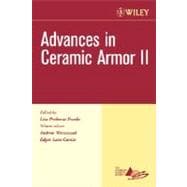
What is included with this book?
Edgar Lara-Curzio is a Distinguished Research Staff Member and the leader of the Mechanical Properties and Mechanics Group at Oak Ridge National Laboratory. Since 1999 he has been serving as leader of the Mechanical Characterization and Analysis User Center in ORNL’s High Temperature Materials Laboratory. Lara-Curzio received a B.Sc. degree in Engineering Physics from the Metropolitan University in Mexico City in 1986 and a Ph.D. in Materials Engineering from Rensselaer Polytechnic Institute, Troy NY, in 1992.
His research work has been focused on studying the mechanical behavior, durability and reliability of structural and functional materials, on understanding the relationships among their processing, microstructure and properties, studying the effect of service environment on their properties and on developing models to describe their behavior and to predict their service life.
Dr. Lara-Curzio has co-edited 6 books and has authored 4 book chapters and more than 140 publications in refereed journals and conference proceedings.
|
|||
|
|||
|
|||
|
|||
|
|||
|
|||
|
|||
|
|||
|
|||
|
|||
|
|||
|
|||
|
|||
|
|||
|
|||
|
|||
|
|||
|
|||
|
|||
|
|||
|
|||
|
|||
|
|||
|
|||
|
|||
|
|||
|
|||
|
The New copy of this book will include any supplemental materials advertised. Please check the title of the book to determine if it should include any access cards, study guides, lab manuals, CDs, etc.
The Used, Rental and eBook copies of this book are not guaranteed to include any supplemental materials. Typically, only the book itself is included. This is true even if the title states it includes any access cards, study guides, lab manuals, CDs, etc.